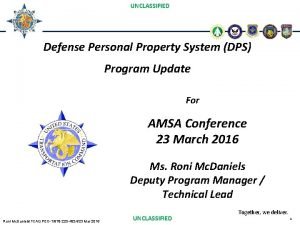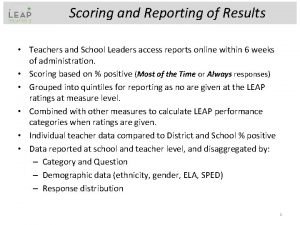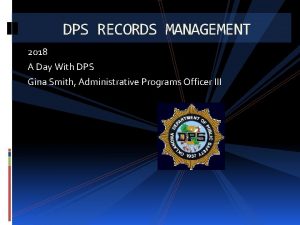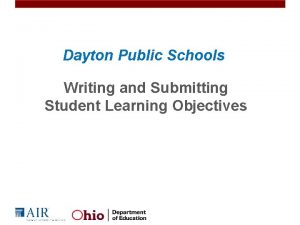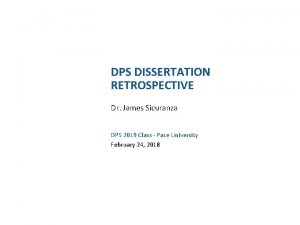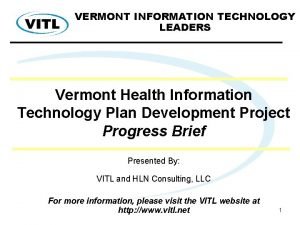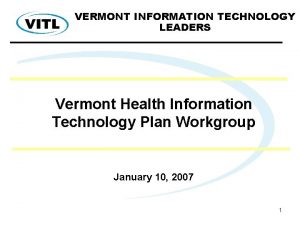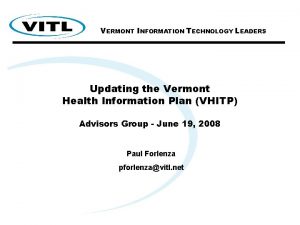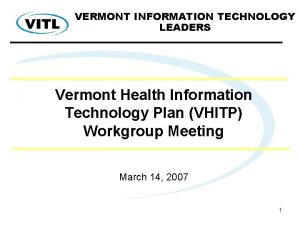VERMONT COMMUNICATIONS VCOMM http www dps state vt














- Slides: 14

VERMONT COMMUNICATIONS (VCOMM) http: //www. dps. state. vt. us/need/ March 2, 2006

Topics • Steps to Functional RFP – Channel Plan – System Inventory – Design Criteria • Dispatch Study

Channel Plan • Voice communications • Voice paging • Mobile data • Narrow banding • Frequency pooling • Frequency reuse • Determine needed channel capacity based on • 95%/95% Develop channel plan

System Inventory and Coverage • Snapshot of current systems • Base stations (Transmitters and receivers) – – – Location Antenna ERP Frequencies Coverage (Propagation Study) • Mobiles • Portables • Pagers

Design Criteria • Geographic coverage • Coverage standard (95%/95%? ) – Mobile/Portable/Pager • Capacity • Analog/Digital/P 25/Narrow-Band • One or two radio solution • System of Systems – – Gateways How to phase

Functional RFP System Inventory Channel Plan Design Criteria Functional RFP

Macro Dispatch Study • Next Steps – Identification of current and accurate dispatch call volume data for demand projections, staffing plans, and network capacity planning – Analysis of operating expenses and other associated costs in support of financial models of the intended restructured environment for establishing/negotiating “fees for service”

Macro Dispatch Study • Next Steps (Continued) – Assessment of people factors for role definition, current capabilities, skills development, or management potential, career path mapping, or training programs – creation of a human resources plan if one does not exist. – Documentation of current practices for standardization and best practices transitions – Preliminary engineering to identify facility or network alteration requirements in addition to deployment of new mobile data and two-way radio capabilities, and enhancing security and survivability of public safety communications services.

Dispatch Facilities

Dispatch RFP • Develop RFP (Based on Summer Study • Committee and Macro Reports) Define Current System – – – Current configuration of dispatch Inventory of equipment at each dispatch facility Inventory of current staffing at each dispatch facility Current operating costs at each dispatch facility Call volume current at each dispatch facility Time and motion study of selected facilities

Dispatch RFP • Define Future Needs – Call volume future 5 and 10 year projection – Security – Diversity of communications links – Redundancy and fault tolerance – Links to other systems

Dispatch RFP • Development and evaluate alternatives to meet current and future needs – – – Integration with two-way radio and data systems Integration with new E 9 -1 -1 system Staffing Estimate costs Methods to assess costs to users Analysis of Pros and Cons of Dispatch RFP

Dispatch RFP • Develop Recommended Standards and Practices – Standard Operating Procedures – Recommended Training – Assessment of Costs

The End QUESTIONS?







